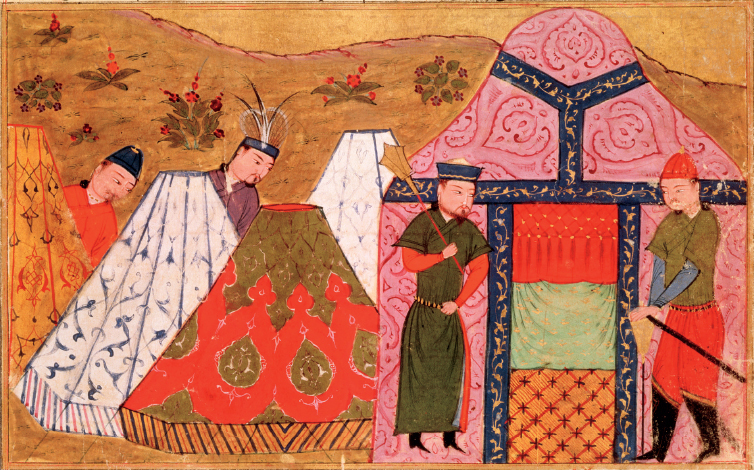Understanding World Societies:
Printed Page 335
Chapter Chronology
IIN THE MID-TWELFTH CENTURY the Mongols were just one of many peoples in the eastern grasslands, neither particularly numerous nor especially advanced. Why then did the Mongols suddenly emerge as an overpowering force on the historical stage? One explanation is ecological. A drop in the mean annual temperature created a subsistence crisis. As pastures shrank, the Mongols and other nomads had to look beyond the steppe to get more of their food from the agricultural world. A second reason for their sudden rise was the appearance of a single individual, the brilliant but utterly ruthless Temujin (ca. 1162–1227), later and more commonly called Chinggis Khan (sometimes spelled Genghis or Ghengis).

The Tent of Chinggis Khan
In this fourteenth-century Persian illustration from Rashid al-Din’s History of the World, two guards stand outside while Chinggis is in his tent. (From a book by Rashid al-din [1247–1318] [vellum], Persian School [14th century]/Bibliothèque Nationale, Paris, France/The Bridgeman Art Library)
